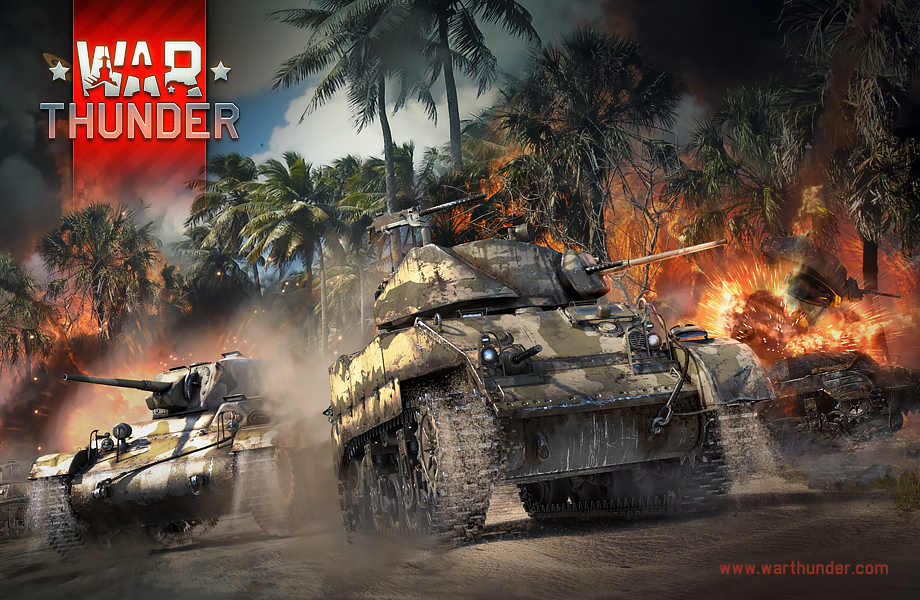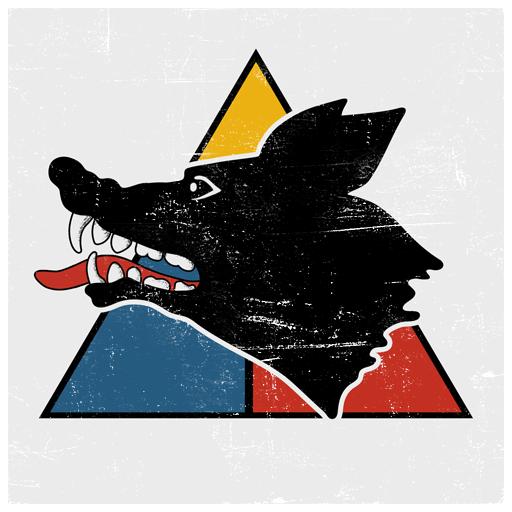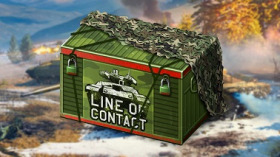
- For PC
- For MAC
- For Linux
- OS: Windows 10 (64 bit)
- Processor: Dual-Core 2.2 GHz
- Memory: 4GB
- Video Card: DirectX 11 level video card: AMD Radeon 77XX / NVIDIA GeForce GTX 660. The minimum supported resolution for the game is 720p.
- Network: Broadband Internet connection
- Hard Drive: 23.1 GB (Minimal client)
- OS: Windows 10/11 (64 bit)
- Processor: Intel Core i5 or Ryzen 5 3600 and better
- Memory: 16 GB and more
- Video Card: DirectX 11 level video card or higher and drivers: Nvidia GeForce 1060 and higher, Radeon RX 570 and higher
- Network: Broadband Internet connection
- Hard Drive: 75.9 GB (Full client)
- OS: Mac OS Big Sur 11.0 or newer
- Processor: Core i5, minimum 2.2GHz (Intel Xeon is not supported)
- Memory: 6 GB
- Video Card: Intel Iris Pro 5200 (Mac), or analog from AMD/Nvidia for Mac. Minimum supported resolution for the game is 720p with Metal support.
- Network: Broadband Internet connection
- Hard Drive: 22.1 GB (Minimal client)
- OS: Mac OS Big Sur 11.0 or newer
- Processor: Core i7 (Intel Xeon is not supported)
- Memory: 8 GB
- Video Card: Radeon Vega II or higher with Metal support.
- Network: Broadband Internet connection
- Hard Drive: 62.2 GB (Full client)
- OS: Most modern 64bit Linux distributions
- Processor: Dual-Core 2.4 GHz
- Memory: 4 GB
- Video Card: NVIDIA 660 with latest proprietary drivers (not older than 6 months) / similar AMD with latest proprietary drivers (not older than 6 months; the minimum supported resolution for the game is 720p) with Vulkan support.
- Network: Broadband Internet connection
- Hard Drive: 22.1 GB (Minimal client)
- OS: Ubuntu 20.04 64bit
- Processor: Intel Core i7
- Memory: 16 GB
- Video Card: NVIDIA 1060 with latest proprietary drivers (not older than 6 months) / similar AMD (Radeon RX 570) with latest proprietary drivers (not older than 6 months) with Vulkan support.
- Network: Broadband Internet connection
- Hard Drive: 62.2 GB (Full client)

From 16.00 GMT on June 26th to 07.00 GMT on June 29th, 2015
Take part in our event featuring light US vehicles only on the maps
'Poland', 'Jungle', 'White Rock Fortress' and 'Ash River'!
You can find the event 'Blue on Blue' in the 'Events & Tournaments' tab!
 |
| Model of the FT-17 |
In 1917, the American Expeditionary Forces led by General John Pershing arrived in France to take part in the fight against Germany on the Western Front of World War I. It was then that the Americans first saw the brand new Renault FT-17 light tanks. This vehicle, which was considered revolutionary for its time, was found to be perfect for the new US Tank Force about to be created. In 1918, thanks to the purchasing of the relevant license, the Americans began the serial manufacture of their own FT-17, known as the M1917. These machines, along with the Mark VII heavy tank, were to form the backbone of the US Tank Force. In 1920 however, all that changed. With the passing of the National Defense Act, the idea of producing a heavy tank was abandoned. Instead, the designs were to be one of two possible configurations – a 5-ton light tank and a 15-ton medium tank. This decision paved the way for a slew of projects, prototypes and pilot models produced by US manufacturers, albeit the progress was slow because of very tight budget restrictions. Also, conflicting views of how to use tanks – while many officers believed that tanks should be limited to infantry support roles, General Douglas MacArthur, the Chief of Staff of the US Army, supported the notion of tanks being used by the cavalry in staging fast offensives. Because the Cavalry could not use “tanks” a new definition for an armored vehicle was born – the “Combat Car”.
 |
| Armoured Car М1 |
“Combat Cars” in today's terms can be roughly described as tankettes – fast, lightly armored, and armed with fairly low-caliber weaponry. In the 1930s, two projects were developed simultaneously for the cavalry and the army – the Cavalry was supposed to be supplied with the T5 pilot, later known as the M1 Combat Car. While blisteringly fast (with a top speed of 72 km/h on a beaten track), it was only armed with three machine guns (1 .50 cal. and two .30 cal.) and it's maximum armour thickness clocked in at only 16 mm. The Army at first was interested with the T1 Combat Cars designed by Walter Christie, but later decided not to pursue with the project. Christie's projects were, however, picked up by the Soviet Union, which then proceeded with the production of the BT series of tanks. In the USA, the Army chose the T2 Light Tank prototype to be pushed into mass production. Standardised as the M2, it would then become the main tank of the pre-World War II era.
 |
| М3A1 at Guadalcanal |
Still, the new vehicles were, at best, outfitted with .50 caliber machine guns, which relegated them to infantry support duties. The experiences of the Spanish Civil War resonated throughout the US General Staff, as reports proved that vehicles should be armed with a cannon in order to achieve any success in combat against enemy armour. This prompted the design of the M3 Light Tank. Meanwhile, the US Army quickly began modernising their M2 Light Tanks to the M2A4 standard. This version featured a 37 mm gun as the main armament, replacing the .50 cal M2 machine gun, as well as improved armour protection. Meanwhile, the T7 prototype, which was to become the M3 Light Tank, was beginning to take shape. The tests confirmed the vehicle's readiness for combat, and it was pressed into serial production in 1941. The new M3 Light Tank, dubbed as the “Stuart” or “Honey” by the British, debuted in combat in November 1941 in North Africa. There, however, it suffered heavy losses and was not liked by the British, mainly due to its lackluster armament. The Stuarts and M2A4 tanks also took part in the Pacific Campaign, fighting in the Philippines and Guadalcanal – there, however, tank vs. tank combat was a rare sight, due to unfavourable terrain. The M3 proved itself on Guadalcanal, vastly multiplying the firepower used against the Japanese by the USMC. The criticisms levelled at the M3 were noted, and soon an upgraded version of the tank – the M5 – surfaced. The appearance of the M5 still did not solve the firepower debacle – the tank still featured a 37 mm gun, which relegated its use to recon and infantry support roles. However, a new light tank was soon to be on it's way.
 |
| М24 Chaffee |
Based on combat reports from North Africa, the Ordnance Department quickly issued a specification for a new light tank. It would be armed with a 75 mm gun and be equipped with as many parts from the M5 Light Tank as possible to ease maintenance. In 1943, the T24 prototype was presented, and after further testing, it was adopted into the US Army as the Light Tank M24. Production started in 1944, and because of that, many Armoured Divisions were not able to replace their M3 and M5 light tanks before the end of the war. The M24 was later used in Korea, however it quickly proved to be inadequate to the T-34-85 medium tank used by North Korea. The M24 also took saw battle in Indochina, where it was used by the French during the Dien Bien Phu siege. Even before the Korean War, the US were already working on replacing it with a more modern design. The T37 Light Tank prototype paved the way for the M41 Walker Bulldog Light Tank. The new machine was armed with a high-velocity 76 mm cannon, and was capable of firing a variety of shells, including Armour Piercing Discarding Sabot. The Walker Bulldog was too late to see widespread use during the Korean War, but it did, however, take part in the Vietnam War, where it was used by the Army of South Vietnam as a replacement of the M24 Chaffee. The Bulldog was not without its faults. It was very uneconomical and only a small number of aircraft could successfully airlift it. The US Army later tried to design new tanks to replace the M41 – mainly the T71 and the T92 – but those designs never progressed beyond prototype stage.
 |
| T49 |
The appearance of the T-54 medium tank quickly brought forward the question of up-gunning the M41. In 1950, the T49 prototype emerged, armed with a 90 mm gun in place of the 76 mm cannon used on the M41. However, a slew of new designs prompted the Ordnance Department to cancel the plans of up-gunning the M41. Instead, a new light tank was to be developed. After nearly a decade, a brand new design by Cadillac captured the eyes of the US Brass. Dubbed the XM551, the new tank was to be armed not with a conventional, high velocity cannon, but a 152 mm short barreled gun-launcher, capable of firing the MGM-51 Shillelagh ATGM. This way, the new tank would have a fighting chance against Soviet heavy and main battle tanks. After extensive testing and constant design changes, the new tank was pressed into service in 1967, under the designation M551 “Sheridan”. It then took part in the Vietnam War, although there the crews never fired an ATGM at the enemy because of the infantry support character of the mission. The Sheridans fighting in Vietnam suffered many losses from antitank mines, which easily punctured the aluminum hull of the Sheridan. After Vietnam, the Sheridan was used by the US Army in Operation Just Cause, as well as in the Gulf War. The last Sheridans were removed from the inventory in 1996. Currently, the M2 Bradley IFV and the M1128 Stryker MGS fulfill the roles normally assigned to light tanks in the US Army.
Author: Adam “BONKERS” Lisiewicz
With an upcoming Update, we will add the "Wolfpack" emblem of the 15th Tank
Battalion, 6th Armored Division to War Thunder:

Decal created by Branislav "InkaL" Mirkov



